Moving the Needle on Connectivity
in Napa County
The Napa County Bicycle Coalition’s Advocacy Working Group created a list of priority improvements it believed would most increase bicycle connectivity throughout the six jurisdictions in Napa County: Calistoga, St. Helena, Yountville, Napa City, American Canyon and County of Napa. People for Bikes describes connectivity as “how well the bike network connects people with the places they want to go.” Connectivity considers where people live, along with popular locations where people need and want to visit by bike.
The Napa County Bicycle Coalition (NCBC) is focusing on connectivity in anticipation of a new countywide bike plan that the Napa Valley Transportation Authority is beginning to develop this year. Typically, the bike plan has included all recommended improvements, but not a shorter list of priority improvements that will most increase connectivity.
NCBC’s Advocacy Working Group developed the list by reviewing People for Bike’s Bike Network Scores, NVTA’s Napa Countywide Bike Plan, Safe Routes to School Walk Audit reports, and ten years of bike collision data, along with additional transportation documents and guides and our own knowledge of population centers, highly frequented destinations, and riding and traffic patterns.
In March 2024 and June 2024, NCBC issued a two-part survey through our newsletter and social media that presented lists of connectivity priorities in each jurisdiction to our constituents. The surveys solicited feedback on the accuracy of the priorities and any recommended changes. Eighty-five participants responded to part one of the survey, which covered the City of Napa, the City of American Canyon, and the City of St. Helena. Forty-nine participants responded to part two of the survey, which covered the City of Calistoga, Town of Yountville, and County of Napa. The lists below appear in order of priority, informed by the survey, with the highest priority first.
We believe implementing this list of improvements will most move the needle on connectivity in each jurisdiction’s bicycle network, and with the implementation of low-stress bike infrastructure, will most result in mode shift.
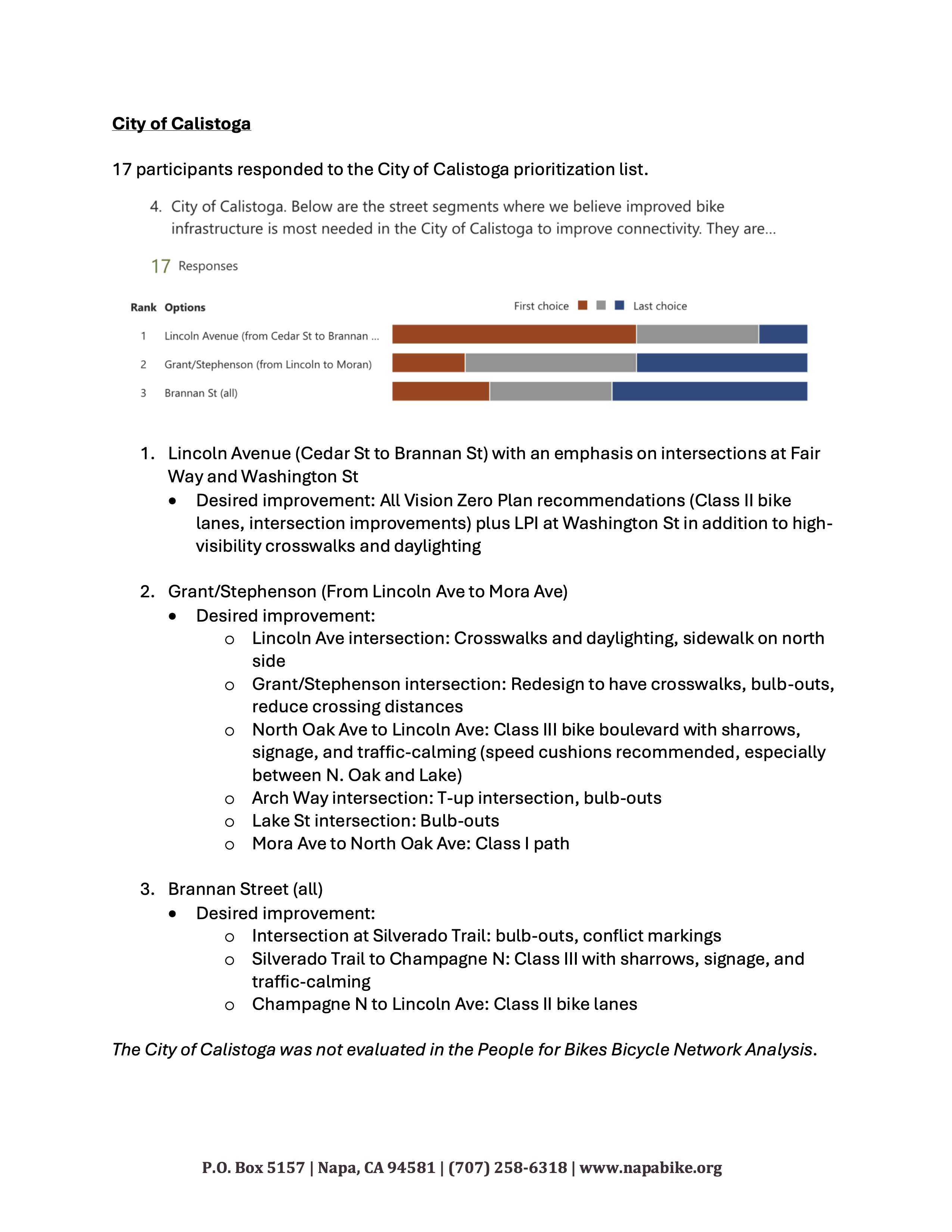


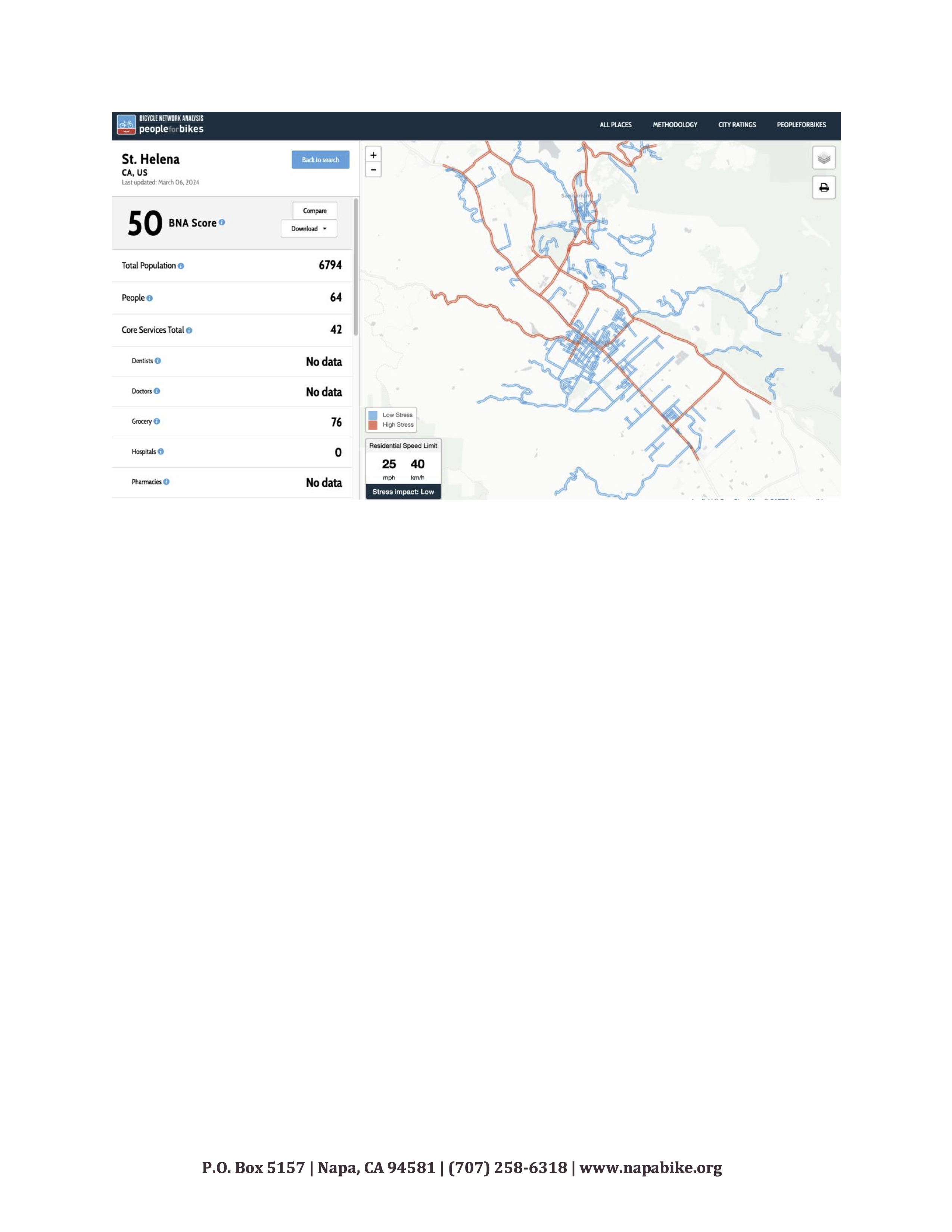
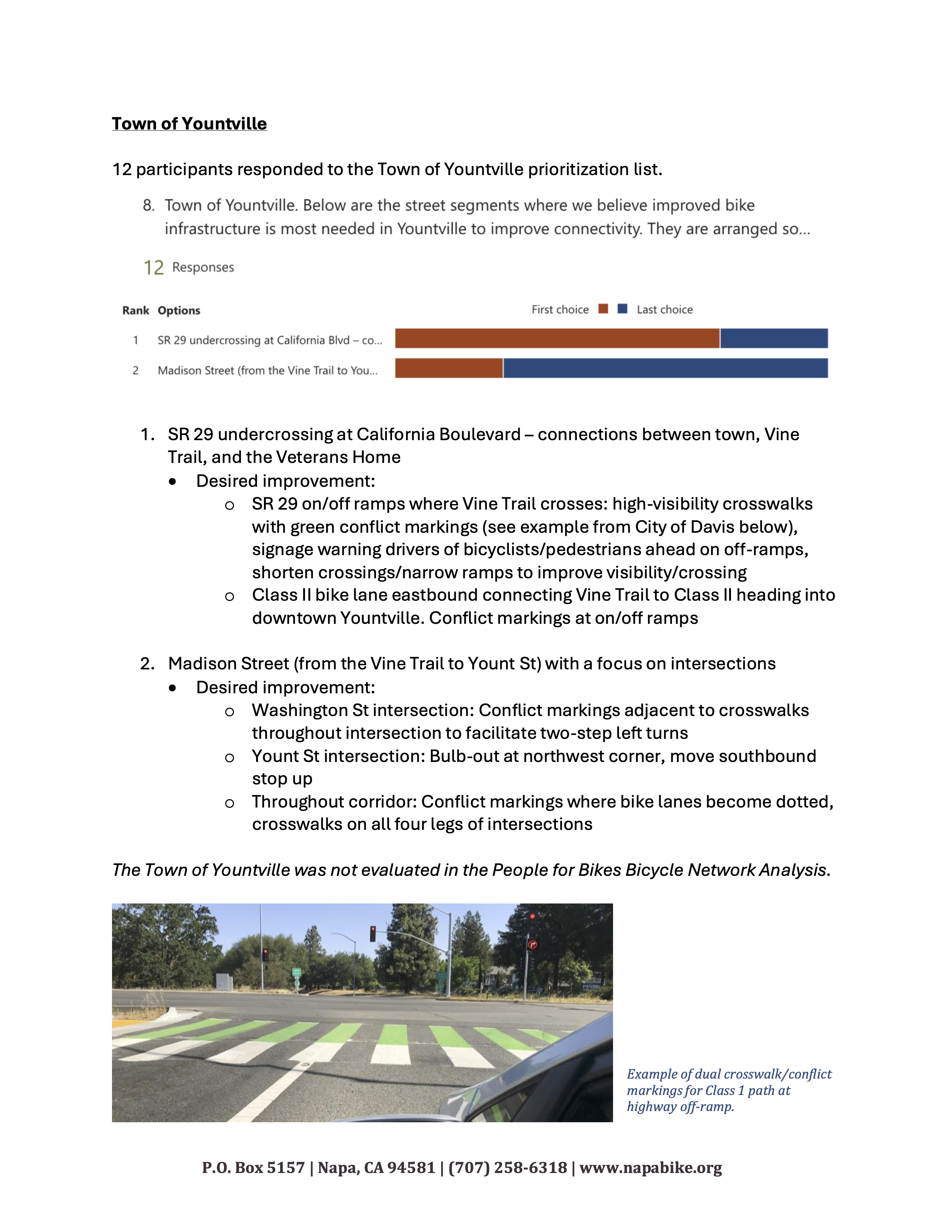 Tab Content goes here
Tab Content goes here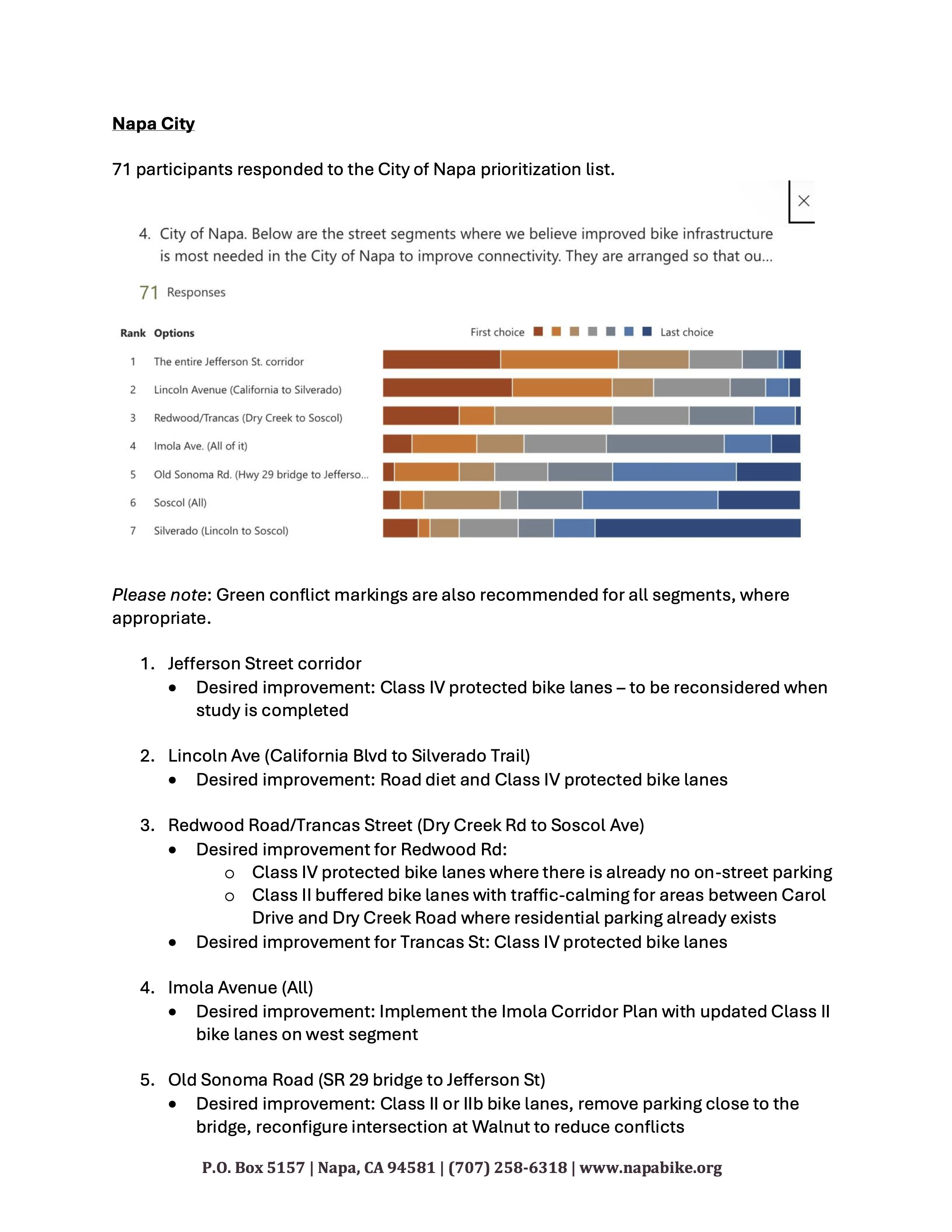
 Tab Content goes here
Tab Content goes here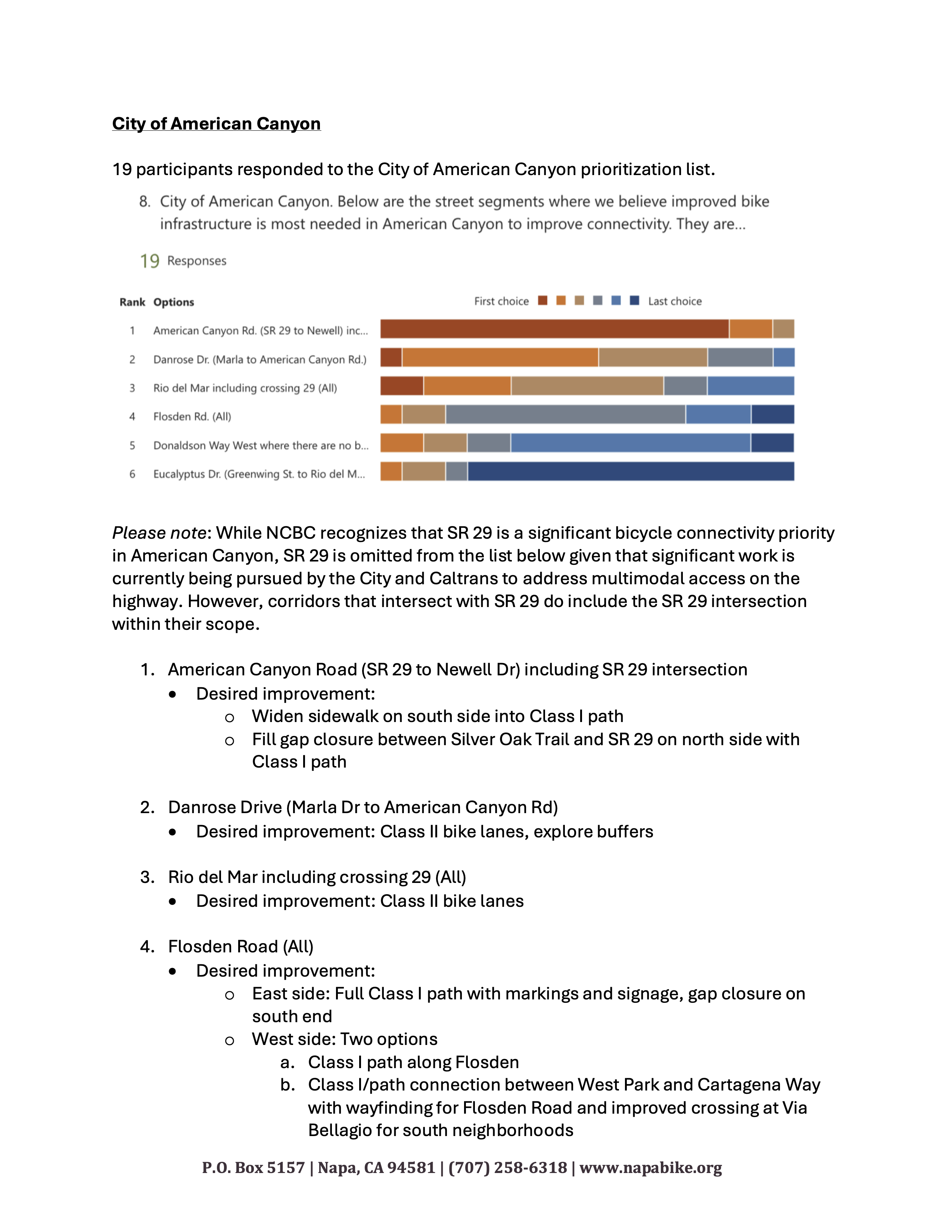

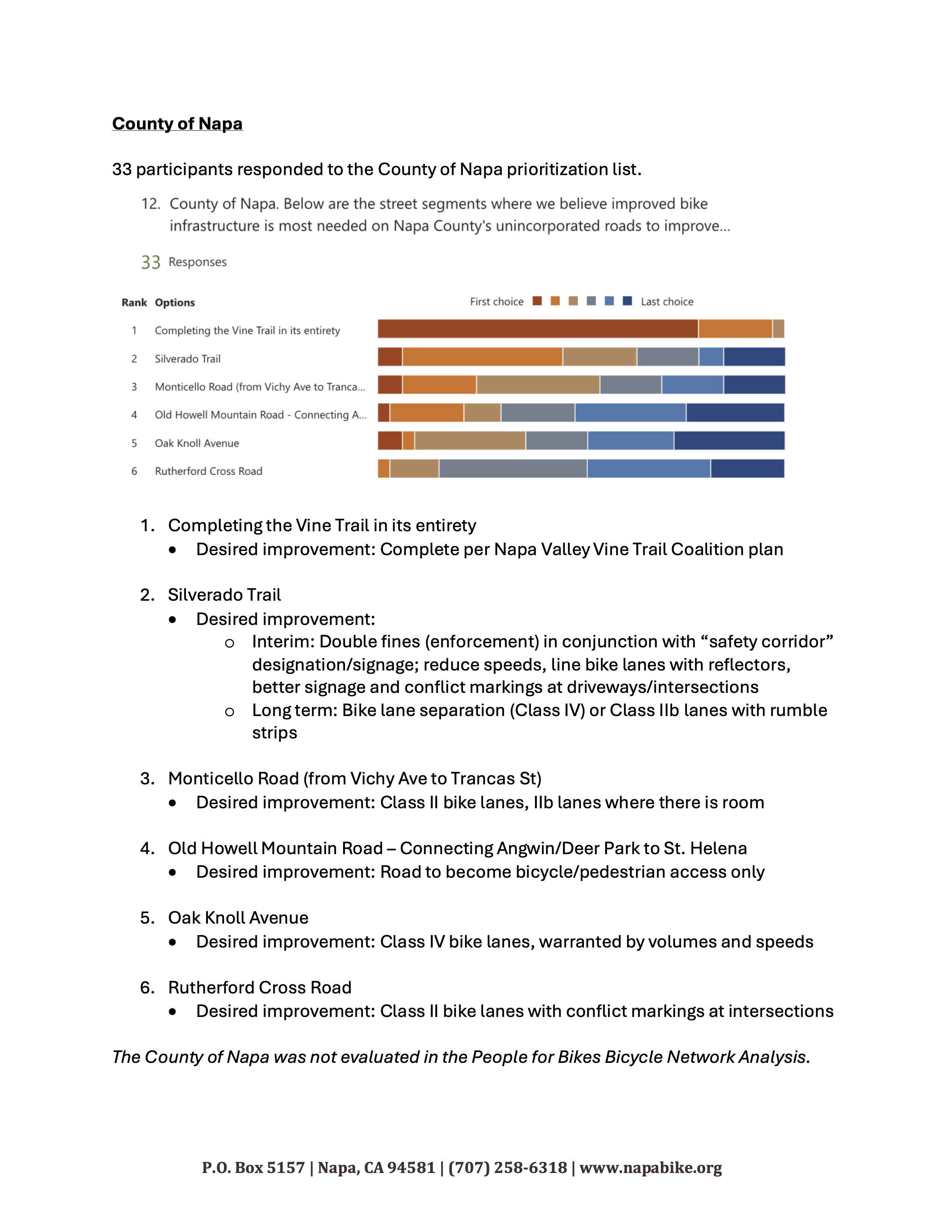 Tab Content goes here
Tab Content goes here
